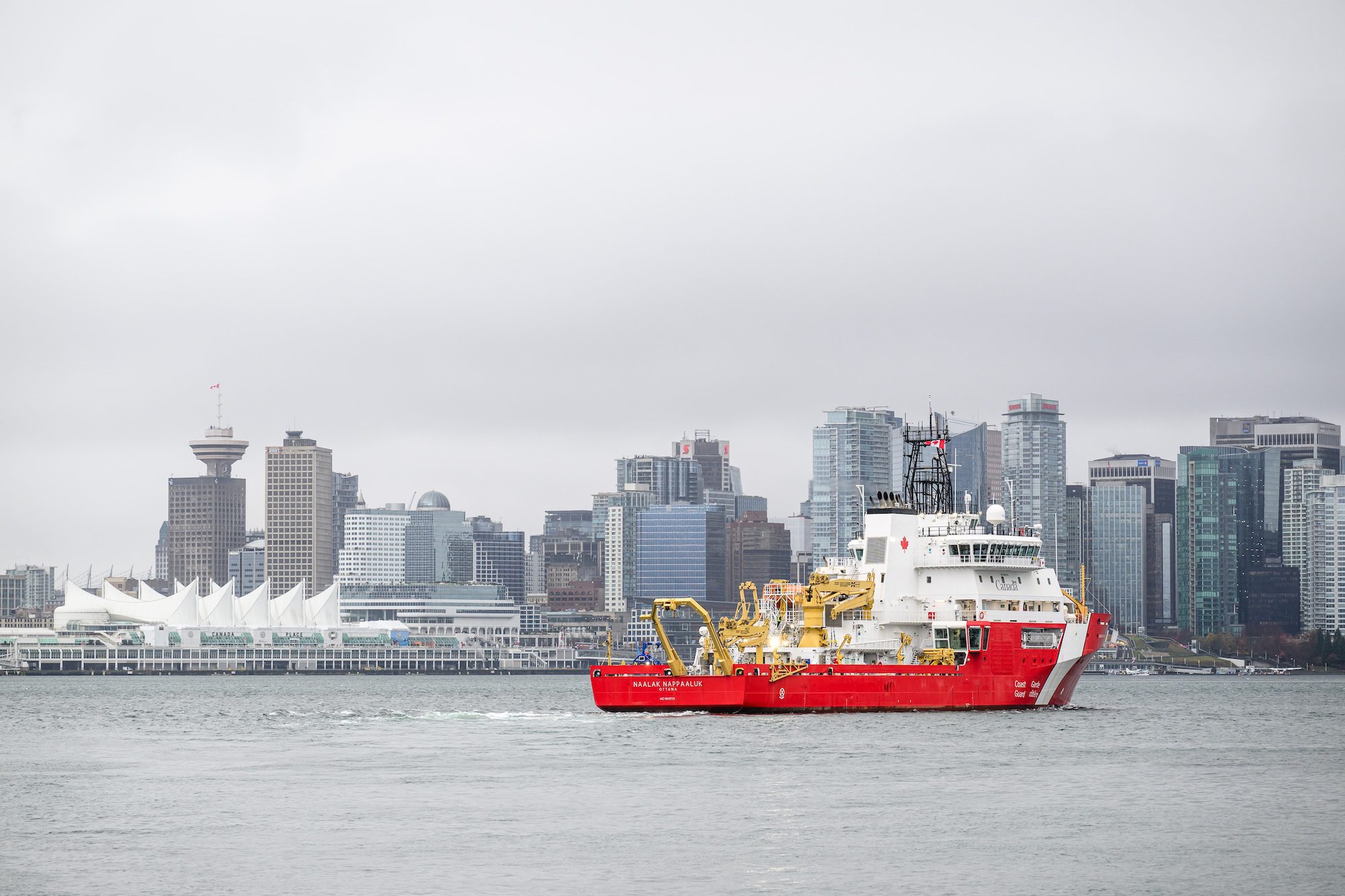The U.S. Coast Guard detected and monitored a Russian military intelligence vessel operating approximately 15 nautical miles south of Oahu on October 29, marking the latest in a series of foreign naval encounters near American waters over the past year.
The Russian Federation Navy Auxiliary General Intelligence ship Kareliya, a Vishnya-class intelligence vessel, was met by a Coast Guard HC-130 Hercules from Air Station Barbers Point and the Coast Guard Cutter William Hart. Coast Guard personnel conducted a safe and professional overflight and transit near the vessel in accordance with international law.
“The U.S. Coast Guard routinely monitors maritime activity around the Hawaiian Islands and throughout the Pacific to ensure the safety and security of U.S. waters,” said Capt. Matthew Chong, chief of response for Coast Guard Oceania District. “Working in concert with partners and allies, our crews monitor and respond to foreign military vessel activity near our territorial waters to protect our maritime borders and defend our sovereign interests.”
The incident near Hawaii follows a pattern of increased foreign naval presence in waters adjacent to the United States. Just weeks earlier, on September 4, the Coast Guard responded to two Chinese research vessels operating in Arctic waters off Alaska’s northern coast. The Chinese-flagged research vessel JIDI was found approximately 265 miles northwest of Utqiagvik, while the Liberia-flagged Chinese research ship Zhong Shan Da Xue Ji Di was located about 230 miles north of the same location.
Both Chinese vessels were operating over the U.S. Extended Continental Shelf and were part of a group of five Chinese vessels active in Arctic waters at the time.
The Coast Guard Arctic District deployed the USCGC Healy to monitor and query both vessels, with additional aerial support from an HC-130J Hercules aircraft from Air Station Kodiak.
“This operation highlights the value of our ice-capable fleet,” said Rear Adm. Bob Little, commander of the U.S. Coast Guard Arctic District. “The U.S. Coast Guard is controlling, securing, and defending the northern U.S. border and maritime approaches in the Arctic to protect U.S. sovereignty, and Healy’s operations demonstrate the critical need for more Coast Guard icebreakers to achieve that.”
In September 2024, the Coast Guard reported another significant maritime encounter when four Russian Federation Navy vessels, including a frigate, tug and two nuclear-powered submarines, were located approximately 57 miles northwest of Point Hope, Alaska. The Russian vessels were initially observed transiting along the Russian side of the Maritime Boundary Line before crossing into U.S. Arctic waters. Coast Guard officials assessed that the vessels were avoiding sea ice and operated within international rules as they traveled about 30 miles into the U.S. Exclusive Economic Zone.
In August 2024, the U.S. Coast Guard detected a Russian Federation Vishnya-class naval vessel south of the Aleutian Islands. The previous month, in July 2024, multiple Chinese military ships were observed near the Aleutian Islands, claiming to conduct “freedom of navigation operations.”
Under customary international law, foreign military vessels are permitted to transit and operate outside other nations’ territorial seas, which extend up to 12 nautical miles from shore.
The incidents highlight the increasing presence of foreign naval forces in waters near Alaska and Hawaii, with both Russian and Chinese vessels conducting operations in the region throughout 2024 and 2025.

 Join The Club
Join The Club










